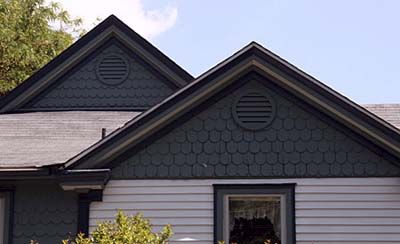Proper attic ventilation is part of creating a comfortable and energy-efficient home. Your attic’s ventilation helps regulate temperature, prevent moisture buildup, and extend your roof’s lifespan. If you’re looking to improve your attic’s airflow, installing soffit vents is an effective and affordable solution. Our guide walks you through the process of improving your attic ventilation, with a focus on soffit vent installation and other strategies to optimize airflow in your home.
Signs Your Attic Needs Better Ventilation
Common indicators your attic doesn’t have proper airflow include the following:
- Excessive heat in the attic during summer months
- Ice dams forming on the roof’s edge in winter
- Moisture or frost buildup on the underside of the roof sheathing
- Mold or mildew growth in the attic
- Peeling paint or wallpaper in rooms below the attic
Addressing these issues promptly can prevent more serious problems and costly repairs down the line.
Types of Attic Ventilation Systems
There are several types of systems that can improve your attic ventilation, each with its own advantages.
Soffit Vents
Soffit vents are installed in the underside of your roof’s overhang, allowing cool air to enter the attic at its lowest point. These vents create better air circulation and are often used in conjunction with other types of vents for optimal performance. Soffit vents come in various styles, including continuous strips and individual units, making them adaptable to different architectural designs.
Ridge Vents
Ridge vents are installed along the peak of the roof and allow hot air to escape from the highest point of the attic. They’re often considered one of the most effective types of attic ventilation when paired with soffit vents, as they create a natural flow of air from the bottom to the top of the attic space. Ridge vents are also a more attractive option, as they blend seamlessly with the roofline.
Gable Vents
Gable vents are installed on the exterior walls at the ends of the attic. They can serve as both intake and exhaust vents, depending on wind direction. While gable vents can be effective, they may not provide sufficient airflow for larger attics and are often used in combination with other vent types for optimal performance.
Roof Vents
Roof vents, also known as static vents or box vents, are installed directly on the roof surface. They allow hot air to escape from the attic and can be used in conjunction with soffit vents to create proper air circulation. Roof vents are relatively easy to install and can be a good option for homes where ridge vents are not feasible.
How To Install Soffit Vents To Improve Attic Ventilation
Installing soffit vents is a practical do-it-yourself (DIY) project that can significantly improve your attic’s ventilation. Follow these steps to add soffit vents to your home.
Step 1: Prepare the Work Area
Before beginning the installation, ensure you have all necessary tools and materials. You’ll need a chalk reel, circular saw, drill, aviation snips, and the soffit vents themselves. Clear the area beneath the soffit and set up a stable ladder. Wear protective gear such as safety glasses and gloves.
Step 2: Cut the Vent Openings
Start by using a chalk reel to snap two parallel lines down the center of the soffit, spaced 2 inches apart. This will allow the vent to overlap the cutout by a 1/2-inch on each edge. Next, use a circular saw to cut along these lines, being careful to set the blade depth to cut through only the thin soffit material. For areas near the end of the soffit, use a sharp chisel or sabre saw to connect the cuts.
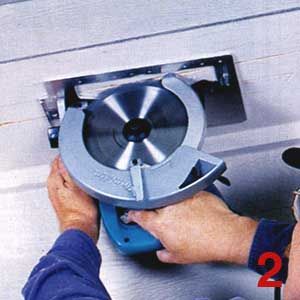
Step 3: Install the Vents
Once the openings are cut, it’s time to install the vents. Lay the strip vent on a flat surface and drill one-eighth-inch diameter screw holes through both flanges, spacing them 12–14 inches apart. With assistance, raise the vent to the soffit and center it over the cutout slot. Secure the vent using 1/2-inch-long, No. 4 sheet metal screws. Continue this process for additional vents, trimming the last vent to fit if necessary.
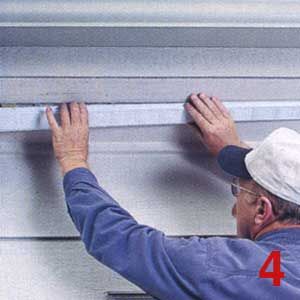
Step 4: Clear Insulation From Vents
After installation, ensure that no insulation is blocking the new vents. For fiberglass batts, simply pull back any that are obstructing airflow. If you have blown-in insulation, use a long piece of wood or a garden rake to clear the area around the vents. This step allows proper air circulation through the newly installed vents.
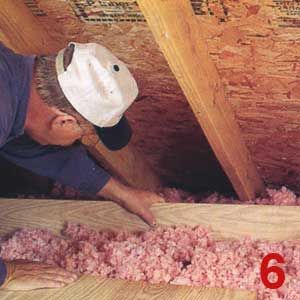
Improving Attic Airflow With Baffles
Attic baffles, also known as rafter vents or insulation baffles, are channels that create a clear path for air to flow from the soffit vents into the attic space. They’re typically made of plastic or cardboard and are installed between the rafters, directly above the exterior walls. Consider installing attic baffles to further enhance attic ventilation. They’ll help maintain good airflow and prevent insulation from blocking soffit vents.
How To Install Attic Baffles
Installing attic baffles is a relatively simple process. Follow these steps:
- Measure the space between your rafters and purchase the correct size baffles.
- Starting at the eave, staple the baffle to the roof deck between the rafters.
- Ensure the bottom of the baffle extends over the top plate of the exterior wall, allowing air to flow freely from the soffit vent.
- Continue installing baffles along each rafter bay where soffit vents are present.
- Once installed, you can add insulation around the baffles, ensuring it doesn’t block the airflow channel.
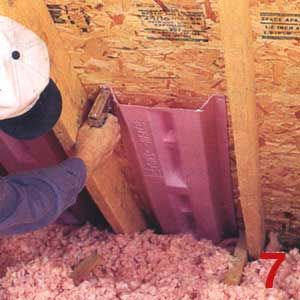
Other Methods To Enhance Attic Ventilation
While soffit vents and baffles are good starting points, there are other methods to further improve your attic’s ventilation system.
Adding Powered Attic Fans
Powered attic fans can provide an extra boost to your ventilation system, especially in hot climates or for large attic spaces. These fans actively expel hot air from the attic, helping maintain a cooler temperature. However, ensure you have adequate intake ventilation (such as soffit vents) to prevent the fan from pulling conditioned air from your living space.
Increasing Insulation
While not directly related to ventilation, proper insulation works hand-in-hand with a good ventilation system to maintain a comfortable and energy-efficient home. Adequate insulation helps prevent heat transfer between your living space and the attic, reducing the workload on your ventilation system. When adding insulation to your attic, be sure to maintain proper clearance around soffit vents and use baffles as needed.
Installing Solar Attic Fans
Solar attic fans are an ecofriendly option to enhance attic ventilation. These fans use solar energy to power a small motor that helps to exhaust hot air from the attic. They can be particularly beneficial in reducing cooling costs during summer. With no need for external power sources, solar attic fans are easy to install and can work effectively in homes with sufficient sunlight exposure.
Using Turbine Vents
Turbine vents, also known as whirlybirds, use wind energy to help ventilate the attic. When the wind blows, it causes the turbine to spin, drawing hot air out of the attic. Turbine vents are an energy-efficient addition to your attic ventilation system and can supplement other vent types. They’re most effective in areas with consistent wind patterns.
Maintaining Your Attic Ventilation System
Regular maintenance keeps your attic ventilation system in top condition. Here are some tips:
- Check for signs of moisture or mold in the attic
- Clean debris from soffit and ridge vents
- Ensure insulation hasn’t shifted to block vents
- Inspect vents annually for blockages or damage
- Verify that all mechanical components function properly
When To Consult a Professional for Attic Ventilation
While many aspects of improving attic ventilation can be DIY projects, there are times when it’s best to consult a professional. Consider seeking expert help if you encounter the following:
- You’re unsure about the current state of your attic ventilation
- Your home has a complex roof structure
- You’re planning a major renovation or roof replacement
- You suspect moisture damage or mold in your attic
- You’re considering installing powered ventilation systems
Our Conclusion
Improving attic ventilation is a valuable investment in your home’s health and efficiency. Consider your specific climate, home design, and budget when planning your attic ventilation improvements. A professional can provide a comprehensive assessment of your attic’s ventilation needs and recommend the most effective solutions for your specific situation.
